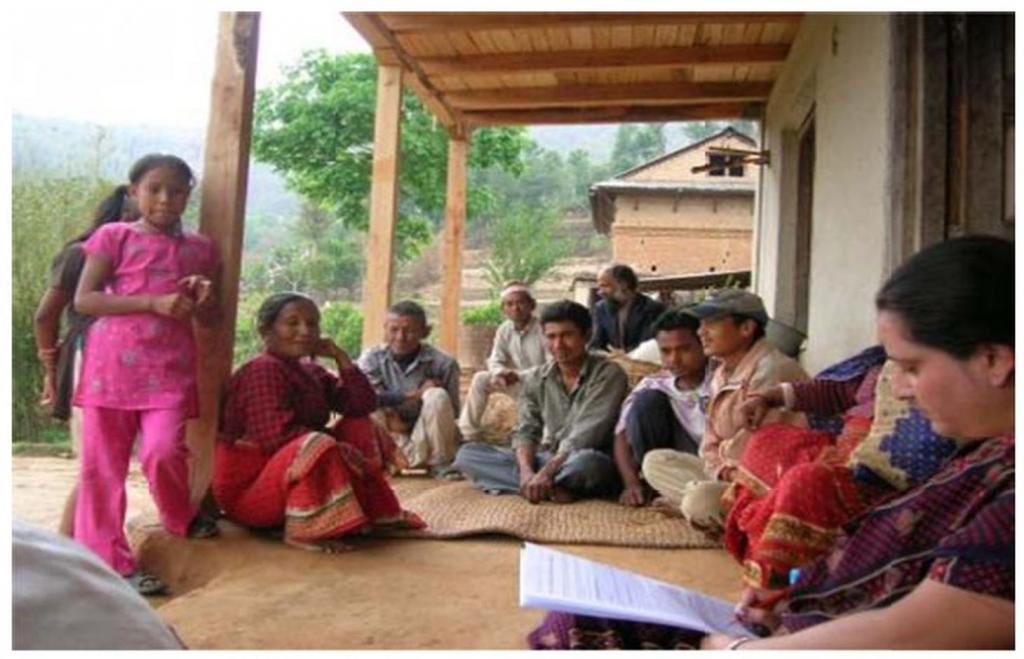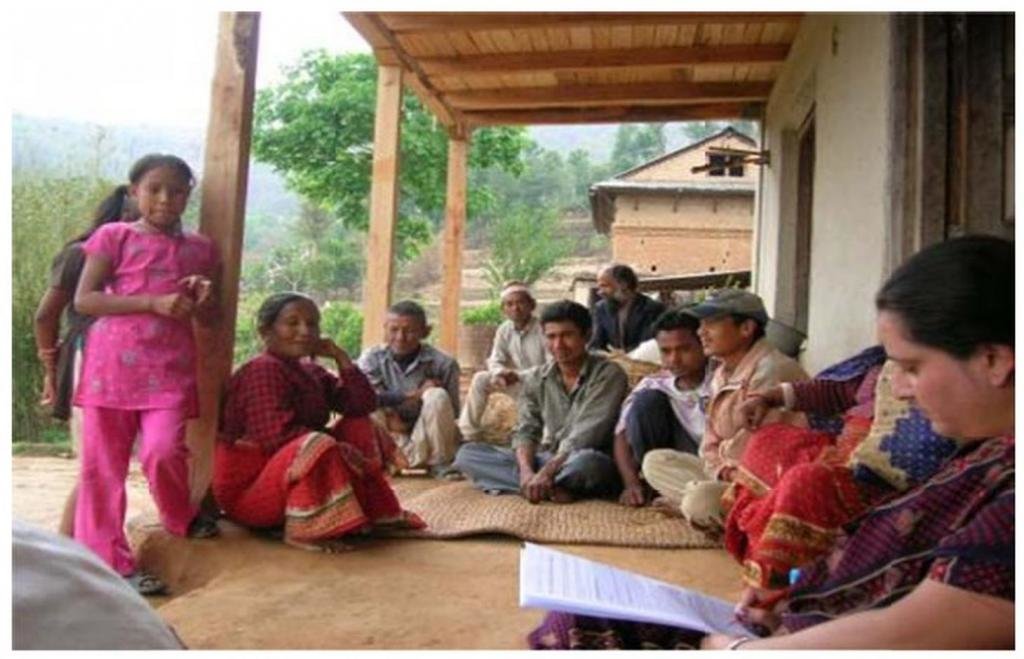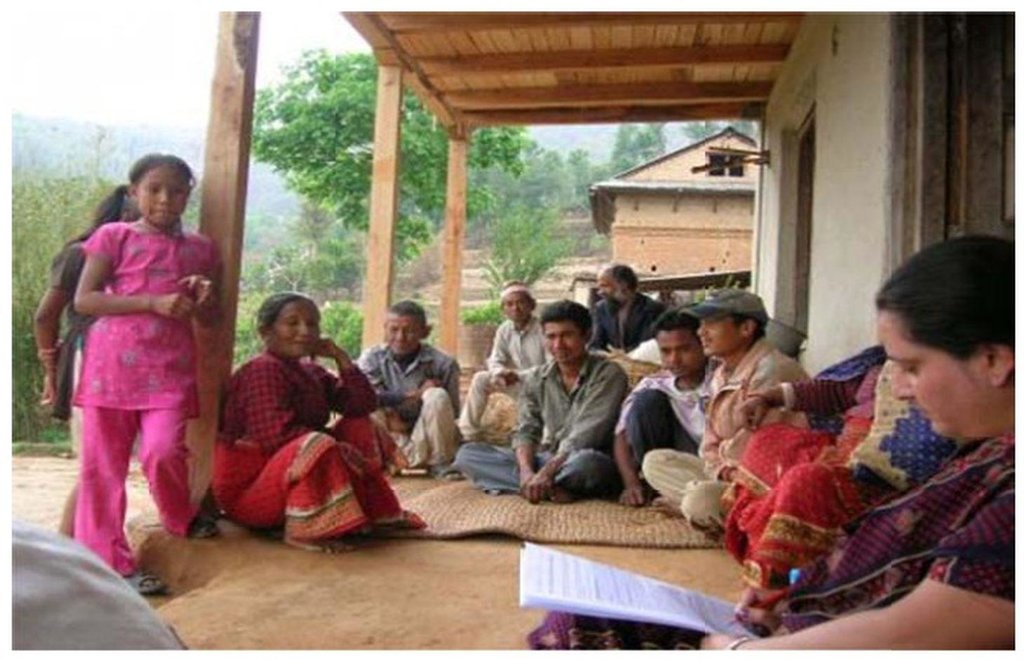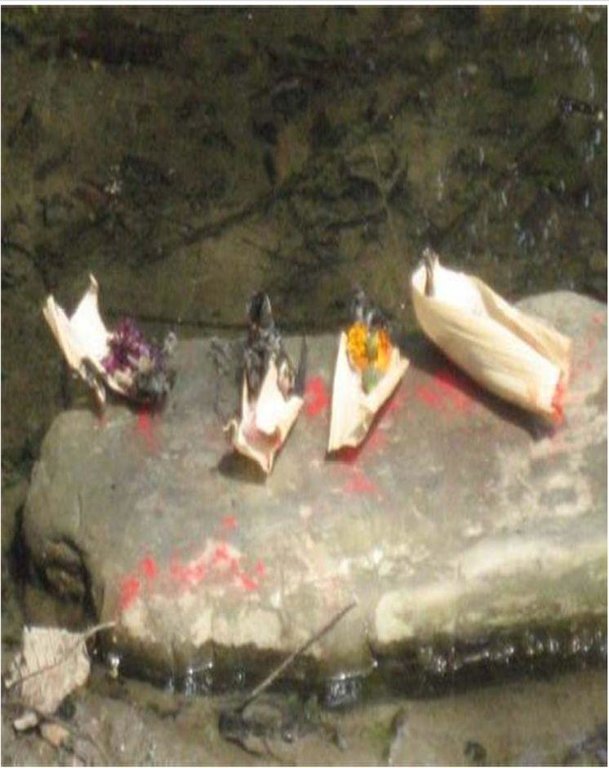Protected gullies – a traditional sustainable land management practice [尼泊尔]
- 创建:
- 更新:
- 编制者: Shreedip Sigdel
- 编辑者: –
- 审查者: Fabian Ottiger
Kholse: eak paramparagat digo bhu-bewasthapan bidhi (Main Contributro: Sabita Khanal, Kathmandu University)
approaches_2666 - 尼泊尔
查看章节
全部展开 全部收起1. 一般信息
1.2 参与方法评估和文件编制的资源人员和机构的联系方式
SLM专业人员:
有助于对方法进行记录/评估的机构名称(如相关)
Kathmandu University (KU) - 尼泊尔有助于对方法进行记录/评估的机构名称(如相关)
ICIMOD International Centre for Integrated Mountain Development (ICIMOD) - 尼泊尔1.3 关于使用通过WOCAT记录的数据的条件
(现场)数据是什么时候汇编的?:
01/03/2013
编制者和关键资源人员接受有关使用通过WOCAT记录数据的条件。:
是
1.4 SLM技术问卷的参考
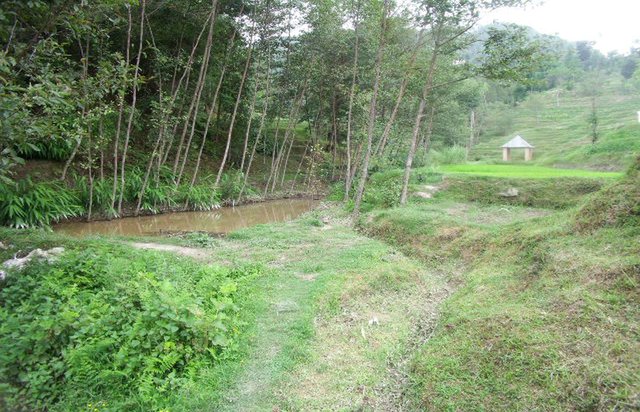
Sustainable land management using controlled gullying [尼泊尔]
An indigenous technology to help control channelled water during the rainy season and conserve it during the dry season
- 编制者: Shreedip Sigdel
2. SLM方法的描述
2.1 该方法的简要说明
Protected gullying is a sustainable land management practice initiated and maintained by the traditional community approach; it is based on indigenous knowledge and uses only locally available materials.
2.2 该方法的详细说明
该方法的详细说明:
Aims / objectives: Sustainable land management aims to prevent soil erosion and to increase productivity; it can take on different forms depending on the exigencies of the terrain.
Methods: In Kabhrepalanchok District, where the slope of the land is not too steep, farmers use gullies controlled using indigenous techniques to protect fertile agricultural land, to minimize erosion, and to help prevent landslides near villages.
For more than two hundred years, land users in jagidol (jagi=rice, dol=gully) villages practiced gully control and they have developed innovative methods for deployment and maintenance of gullies. Periodically, the whole community is involved in discussions for planning and implementation of new measures, but for the most part only routine repairs are needed and the individual farmers whose properties border the gullies shoulder the main responsibility for maintaining them. When severe flooding events cause many gullies to collapse, materials are collected locally and the whole village cooperates in the rebuilding. Both men and women are involved; men usually help with the heavy digging when new gullies are established or during crises when many gullies collapse at once and women are involved in the day-to-day maintenance of the gullies. Communities in villages higher up in the hills have used this approach for a long time; their gullies are more mature and well-entrenched and are reinforced by mature bio-engineering measures. Gullies in villages situated lower down the slope are usually more recently established and typically still require regular maintenance.
The jagidol village community, the Newari guthi (religious group) in the area, and the Hindus who worship the snake god Nagdevata and Shivadevata along the stream banks are particularly conscientious in maintaining the gullies that border the shrine(s). In this example, maintenance of the gullies is a collective effort through social networks.
2.3 该方法的照片
2.5 采用该方法的国家/地区/地点
国家:
尼泊尔
有关地点的进一步说明:
Sharada Batase VDC, Kabhrepalanchok
2.7 方法的类型
- 传统/本土
2.8 该方法的主要目的/目标
The Approach focused mainly on SLM with other activities (Religious, cultural and ecological significance)
To ensure the maintenance of the system of gullies that acts to help prevent soil erosion and protect against flooding. During the rainy season the gullies channel water away, and during the dry season they can be modified to collect water for irrigation. Maintenance is especially important during the rainy season because when water is not channelled many terraces can collapse simultaneously and the ensuing landslide can threaten the stability of the entire village.
The SLM Approach addressed the following problems: This approach suffers from a lack of institutional infrastructure. Since the group that maintains the gullies is not registered as a conservation team or an organization, it is not entitled to technical or financial support of any kind from government or non-governmental organizations. The research conducted by the community is not documented anywhere, it is passed on by word of mouth. A shortage of labour (or labour saving devices) is a persistent constraint in the maintenance of the gullies.
2.9 推动或妨碍实施本办法所适用的技术的条件
财务资源和服务的可用性/可得性
- 阻碍
For the labour needed to perform the maintenance. During the busy parts of the farming year there is little or no labour available for land management projects.
Treatment through the SLM Approach: Sustainable land management projects are scheduled for the dry season when farmers have fewer farming-related obligations.
法律框架(土地使用权、土地和水使用权)
- 启动
The existing land ownership, land use rights / water rights moderately helped the approach implementation: It is generally accepted that since the farmer whose land borders the gullies gets the most benefit by having access to the water, that it is his responsibility to maintain and repair them. In times of crises, when gullies collapse beyond his individual ability to repair them, he can ask the community for help.
- 阻碍
The landowner is mostly responsible
Treatment through the SLM Approach: The landowner is encouraged by others in the community to maintain the gullies that border of his/her land
了解SLM,获得技术支持
- 阻碍
Farmers are not fully aware of the best gullying practices
Treatment through the SLM Approach: New methods and the use of new materials can be learned from other projects implemented in nearby areas
其他
- 阻碍
Financial: To purchase tools and equipment needed for maintenance activities
Treatment through the SLM Approach: Local materials are used; the community makes in-kind and (occasionally) in-cash donations
3. 相关利益相关者的参与和角色
3.1 该方法涉及的利益相关者及其职责
- 当地土地使用者/当地社区
Generally the farmer owning the land that borders on the gullies maintains them.
Usually the gullies are dug by young men. Men are also involved when gullies collapse and heavy digging is needed. Women conduct routine maintenance throughout the year.
如果涉及多个利益相关者,请注明领导机构:
The elders in the community are the repositories of traditional knowledge and best practices on gullying. The community discusses with them and together they decide on a plan of action that best suits the existing conditions. The solution is usually implemented by the men during the dry season and the women maintain the gullies during the rainy season.
3.2 当地土地使用者/当地社区参与该方法的不同阶段
| 当地土地使用者/当地社区的参与 | 指定参与人员并描述活动 | |
|---|---|---|
| 启动/动机 | 自我动员 | The community as a whole decides when it needs to initiate sustainable land management in order to prevent erosion, to increase the amount of available farmland, and to protect the village from landslides. |
| 计划 | 自我动员 | The community plans to dig gullies during the dry season; during the monsoon they plant grasses whose roots help to anchor the structures. |
| 实施 | 自我动员 | The land users implement protective measures during the times when they are not actively farming; they use all local materials |
| 监测/评估 | 自我动员 | Gullies are monitored routinely as part of normal farming activities; the gullies are maintained and repaired as needed. |
| Research | 无 |
3.4 有关SLM技术选择的决策
具体说明谁有权决定选择要实施的技术:
- 仅限土地使用者(自主)
解释:
Decisions on the method of implementing the SLM Technology were made by by land users* alone (self-initiative / bottom-up)
4. 技术支持、能力建设和知识管理
4.3 机构强化(组织发展)
是否通过这种方法建立或加强了机构?:
- 否
4.4 监测和评估
监测和评估是该方法的一部分吗?:
是
注释:
bio-physical aspects were regular monitored by land users through measurements; indicators: Gullies are regularly monitored by the land users but there is no formal reporting; the community observes the evolution of the approach
socio-cultural aspects were regular monitored by land users through observations; indicators: When there are temples or shrines near the gullies, these are also places of worship for Nagadevta (the snake god) and Shivadevata. The villagers make a special effort to maintain the gullies.
Continuity of the approach aspects were regular monitored by land users through observations; indicators: The community has for generations used gullying as a practice for sustainable land management.
There were few changes in the Approach as a result of monitoring and evaluation: The practice has not changed significantly for generations; however, the use of new materials and techniques can be observed in communities farther downhill where the practice is a more recent innovation.
5. 融资和外部物质支持
5.1 该方法中SLM组成部分的年度预算
如果不知道准确的年度预算,请给出一个范围:
- < 2,000
注释(例如主要的资助来源/主要捐助者):
Approach costs were met by the following donors: local community / land user(s): 100.0%
5.2 为土地使用者提供财政/物质支援
土地使用者是否获得实施该技术的财政/物质支持?:
否
5.3 对特定投入的补贴(包括劳动力)
- 无
如果土地使用者的劳动力是一项重要的投入,那么是不是:
- 自愿
5.4 信用
是否根据SLM活动的方法给予信用值?:
否
6. 影响分析和结论性陈述
6.1 方法的影响
该方法是否帮助土地使用者实施和维护SLM技术?:
- 否
- 是,很少
- 是,中等
- 是,支持力度很大
Gullying helps to reduce the incidence of erosion, landslides, and floods as a result of which the dwellings in the village are more stable and everyone enjoys a greater sense of security.
该方法是否有助于社会和经济弱势群体?:
- 否
- 是,很少
- 是,中等
- 是,支持力度很大
Did other land users / projects adopt the Approach?
- 否
- 是,很少
- 是,中等
- 是,支持力度很大
There are a few incidences where farmers from neighbouring valleys have observed the gullying and have implemented similar sustainable land management measures in their own villages.
Did the Approach lead to improved livelihoods / human well-being?
- 否
- 是,很少
- 是,中等
- 是,支持力度很大
the water and soil conservation afforded by the gullies means that there is more arable land available for quality crop production. More abundant crops ensure a marked improvement in the health and wellbeing of the whole community.
Did the Approach help to alleviate poverty?
- 否
- 是,很少
- 是,中等
- 是,支持力度很大
Farmers can now produce more crops so that families have more food available and can even earn some cash income by selling some of their excess produce. The entire village has benefited from this approach and everyone is better off.
6.2 土地使用者实施SLM的主要动机
- 增加生产
creating better soil conditions and making water available for irrigation
- 增加利润(能力),提高成本效益比
when better quality farm land is available and when farmer have access to water for irrigation more
- Risk Minimization
flooding, soil erosion (runoff), and landslides are a constant threat for hillside farmers.
6.3 方法活动的可持续性
土地使用者能否维持通过该方法实施的措施(无外部支持的情况下)?:
- 不确定
若否或不确定,请具体说明并予以注释:
In recent times there is a shortage of local labour and volunteers. Some form of subsidy or external aid will be needed to support this land management practice and keep it sustainable. With funding, the village can purchase better materials and create longer lasting structures which need less maintenance.
6.4 该方法的长处/优点
| 编制者或其他关键资源人员认为的长处/优势/机会 |
|---|
| The community works together for the benefit of all. (How to sustain/ enhance this strength: Continue to support the community in their traditional land management practices.) |
|
Everyone's suggestions, including those of nearby communities, are taken into serious consideration when planning sustainable land management. (How to sustain/ enhance this strength: Continue to promote a regard for others sharing the same landscape) |
6.5 该方法的弱点/缺点以及克服它们的方法
| 编制者或其他关键资源人员认为的弱点/缺点/风险 | 如何克服它们? |
|---|---|
| There is no formal planning and no contact with either the local authorities or potential funding agencies for conservation work | Formalize planning and implementation and become recognized as a legitimate conservation group. |
| Farmers are leaving the area in search of paid employment. New actors are moving into the area and the larger community is changing. There are recurrent incidents of land use change such as brick factories moving into the area. | The government can institute zoning to regulate what land is deemed for cultivation only. |
7. 参考和链接
7.1 方法/信息来源
- 实地考察、实地调查
- 与土地使用者的访谈
链接和模块
全部展开 全部收起链接

Sustainable land management using controlled gullying [尼泊尔]
An indigenous technology to help control channelled water during the rainy season and conserve it during the dry season
- 编制者: Shreedip Sigdel
模块
无模块


